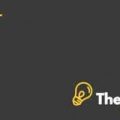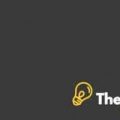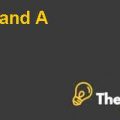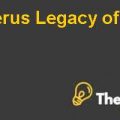Introduction
Essel and Silor were two companies that dominated the French Optical eye wear market that merged in the year 1972 to form Essilor. With the merger, the two companies offered wide range of products which include the lenses, compasses, frames, and topography and drawing instruments. However, by the mid-1980s, the company actually reduced and narrowed down its product line to become more innovative and technology intensive corrective lenses company.
The industry back then was growing rapidly and Essilor became the market leader with its strong distribution network and a number of acquisitions and strategic mergers. As per the case details, in the year 2005, Essilor became the largest player in the market with the total share of more than three times of the next in line competitor Hoya.
The company has more than 31,000 employees and it has been offering its products in more than 100 countries. Moreover, the company produced approximately 215 million eyeglass lenses. The major product for Essilor has been Vilarux which is the cash cow for the company that has been generating maximum revenues for Essilor.
Korean market, which is considered the most profitable market in Asia for the products offered by Essilor, had to move out of Korea in the year 1993 because of poor decisions made at that time. However, in the year 2003, Essilor decided to launch itself once again in the Korean market.
Question 01
What cross-cultural management issues Stephen Shawler is facing in the case, in relation to the topics we have covered in the course so far? How do cultural differences explain those issues? Refer to more than one scholar’s cultural dimensions in your analysis of the issues.
As the case states, Stephen Shawler who is an American national was appointed as the Vice President and co-CEO of Essilor Korea. The reason why he was appointed at the designation was because of his past experience at Johnson & Johnson where he served for 16 years. During his time at Johnson & Johnson, Shawler worked in Singapore and several locations of China. This was the prime reason to actually sending him to work in Asian country once again.
Geert Hofstede
Communication Barrier
The major problem that has been identified in the case is regarding the cross cultural issues which Stephen Shawler has been facing in Korean market. The major issue as stated in the case is regarding the communication barrier. Since most of the Korean employees working at Essilor are unable to understand English, therefore they consider Shawler as someone who has problem and is biased towards people that speak English.
Moreover, the employees at the company feel that the major criteria to work at Essilor are to be good with English. The other major issue, which the co-CEO of Essilor has been facing while looking to formulate profitable strategies for the Korean market is that the co-CEO who is a Korean has been a big hurdle in the decisions Shawler has been taking. He has been retaliatingthe decisions taken by Shawler because he believes that the goals, which Shawler is trying to achieve, hurt the cultural values of the Korean people.
Attitude towards work
The attitude towards the work is also an issue that is faced by Stephen Shawler. An American employee is rather more focused and committed to work. He does not find excuses to run away from work; in fact he tries to engage in all kinds of different work.
Koreans do not like working out of their comfort zone and domain. This has also been an issue for Stephen Shawler who expected employees to be supportive and engaging rather than staying idle.
Individualism versus collectivism
Along with this, the employees who have been working in Korea are rather different. They have different management style and they actually focus on results rather than team work. They avoid interacting as a team. However, they are good enough as individual players.
This was another major issue faced by Shawler. Being a United States based individual, where it is in the culture that promotes team building and participation. Over here in Korea while in a meeting, Shawler was quite fumed with the fact that employees did not share ideas, did not participate in team decision making. Throughout his stay at the company, he wanted to make sure that the employees during the meeting sparticipate; however, they did not do it at all.......................
This is just a sample partial case solution. Please place the order on the website to order your own originally done case solution.















